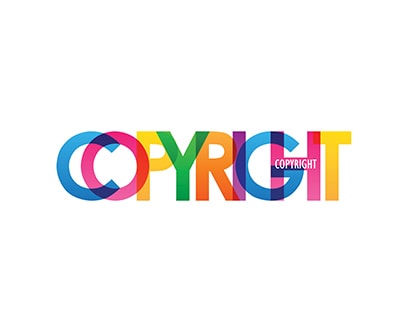Legal Update: Is an insurer vicariously liable for an agent’s fraud?
22 1月 2018
Vicarious liability is the legal doctrine that holds one party liable for wrongdoing committed by another, typically where the party held liable is superior to or has some right to control the other’s actions. This most commonly arises in the employment context, where an employer is generally held liable for any tort committed by an employee in the course of his/her duties. However, vicarious liability is not limited to the employment relationship and can extend to the relationship between insurer and insurance agent.
Recent cases affirm that the relationship between insurer and agent can give rise to vicarious liability, even though the agent is not the insurer’s employee and the agent’s contract with the insurer explicitly denies any employment relationship. In deciding whether to impose vicarious liability, courts will consider if this is fair, just and reasonable taking into account the overall relationship (including the insurer’s control over the agent) and enterprise risk considerations, including the insurer’s business model, the regulatory framework governing the insurance industry and deterrence of future harm. In Hong Kong, many agents are tied exclusively to one insurer and even non-exclusive agents are bound under the HKFI Code of Practice to represent no more than four insurers, including no more than 2 long-term insurers. These ties between insurer and agent, and the functions performed by the agent on the insurer’s behalf, tend to create circumstances where a court may find vicarious liability.
Case Analysis
A recent Singapore case, in which a major life insurer was held vicariously liable for an agent’s fraud, is instructive. In that case, the agent had sold the plaintiffs (an elderly Indonesian couple) a fictitious 5-year life insurance policy. Funds remitted by the plaintiffs for the fake policy were used by the agent to buy unauthorized policies in the plaintiffs’ names, which the agent later deceived the plaintiffs into surrendering. The funds were then misappropriated by the agent. Throughout this process, the insurer relied on the agent to liaise with the plaintiffs regarding the policies they held and to transmit instructions as to how to handle their money, refund cheques and surrender proceeds.
In finding the insurer vicariously liable for the agent’s fraud, the Singapore High Court applied a 2-stage test, under which vicarious liability will be imposed where:
- There is a “special relationship” between the tortfeasor (fraud perpetrator) and the defendant making it “fair, just and reasonable” for liability to be imposed; and
- The conduct of the tortfeasor is closely connected to his/her relationship with the defendant, particularly where that relationship materially increases the risk of the fraud being committed.
In applying this test for vicarious liability, the Singapore Court followed an established line of UK and Canadian caw law which identified two policy considerations for imposing liability: 1) effective compensation for the victim; and 2) enterprise risk theory, which holds that an enterprise which engages agents to advance its business interests and creates the risk of those agents committing wrongs against third parties should bear responsibility for the consequences, since it is best placed (and should be incentivized) to manage the risks and prevent wrongdoing.
Under the first stage of the test (requiring a special relationship between tortfeasor and defendant), vicarious liability is no longer restricted to employment relationships and the court will examine the facts to see if the relationship has some of the same fundamental qualities inherent in employer-employee relationships, including control over the tortfeasor (agent) and integration of his/her activities in the defendant’s (insurer’s) enterprise. On the facts of the Singapore case, the court found that these elements were present, noting that even though the agent’s contract with the insurer specifically stated that the agent was not an employee, she represented the insurer exclusively and performed a wide range of functions on the insurer’s behalf. Further, the insurer’s control over her was very similar to that of an employer training, managing, supervising and disciplining its employees.
Turning to the second stage of the test (requiring a sufficient connection between the tortfeasor’s conduct and his/her relationship with the defendant), the court noted that the fraud had been perpetrated in the context of a business model in which insurers relied on agents to promote and market their policies by developing close relationships with high net-worth policy holders. On the facts, the insurer further enhanced the risk of the agent’s fraud by allowing her to perform tasks on both sides without verification, including accepting her word as instructions and authorization from the customer. Given this business framework and the policy justifications of victim compensation and deterrence, the court found that there was a sufficient connection between the agent’s fraud and her relationship with the insurer so as to justify imposing vicarious liability.
OLN Insights
1. Recent case law confirms that vicarious liability is not confined to employment relationships and can render an insurer liable for its agent’s fraud. Courts will look beyond the agent’s contract with the insurer in assessing if the agent is truly acting as an independent contractor or is effectively controlled by the insurer and integrated within the insurer’s enterprise.
2. Policy considerations, and particularly enterprise risk considerations, may lead a court to hold an insurer vicariously liable for an agent’s fraud in the current regulatory context, which (in Hong Kong as in Singapore) expects insurance companies to take responsibility for the management of its agents, particularly where agents are representing no more than a few insurers, and are seen by the public as representatives of their appointing insurer and an extension of their enterprise.
3. To mitigate exposure, insurers would be well advised to institute more robust controls to verify policyholder instructions rather than relying exclusively on agents to communicate with customers. Verification should be undertaken of significant policy-related requests from policyholders, including instructions on how to apply remitted and/or excess funds and policy surrender requests. For example, policy approval confirmation letters, premium payment letters, policy surrender letters and refund cheques could be mailed directly to the policyholder (with proof of delivery) rather than passed on through the agent.
About OLN’s Insurance Practice Group
OLN’s Insurance Practice Group has direct experience of the legal, regulatory and practical challenges facing insurers and reinsurers throughout Asia region. Members of our Group have worked in the insurance industry and have extensive experience working in and advising insurers and reinsurers on contractual and regulatory matters and risk management issues relevant to their businesses. We have particular expertise in the review and drafting of contractual documentation relating to insurance and reinsurance activities, including the development of policy wording for life, accident, medical and health insurance products, and the review and vetting of related proposals, product brochures and training materials. We also have experience advising on disputes over coverage for claims under both life and general insurance policies, and with support from OLN’s Dispute Resolution Group, are well placed to represent clients in all aspects of insurance litigation.
For more information about any other insurance-related matters, please contact:
Greg Crichton, Consultant
Recent News

 Suite 503, 5/F, St. George's Building, 2 Ice House Street, Central, Hong Kong
Suite 503, 5/F, St. George's Building, 2 Ice House Street, Central, Hong Kong +852 2868 0696
+852 2868 0696














